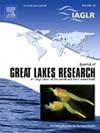Quantifying phosphorus loads from legacy-phosphorus fields
IF 2.4
3区 环境科学与生态学
Q3 ENVIRONMENTAL SCIENCES
引用次数: 0
Abstract
Agriculture is a major contributor to eutrophication across the world. Such is the case for Lake Erie where P loads support recurrent harmful cyanobacterial blooms. To mitigate these blooms, targets have been set for total and dissolved reactive P (TP/DRP) loads during the annual and March-July periods. To accelerate progress towards meeting these goals, a targeted management approach aimed at the fields with the greatest P loads has been suggested. A public–private partnership recruited legacy-P fields to quantify P loads in runoff by leveraging the positive relationship between soil test P (STP) and discharge P concentrations. Legacy-P fields were previously defined as having one or more zones with STP >100 ppm (two-fold above agronomic needs); all others were termed agronomic-P fields. Edge-of-field monitoring was performed during 2021 on 11 legacy-P and 13 agronomic-P fields (total n = 24). Legacy-P fields had 2-fold greater March-July DRP loads but only 0.5-fold greater annual TP loads, though both were statistically nonsignificant effects (g≈0.5). Effects were smaller (g≈0.2) for March-July TP and annual DRP. Over half of the legacy-P fields lacked meaningful (<1% of total) surface loads with little to no observed runoff. Further analysis revealed that legacy-P fields had a stronger effect on subsurface discharge, with a statistically significant effect (g = 0.81, p = 0.05) on the March-July DRP concentrations. Statistical significance in this study was obscured due to a large degree of variance and limited sample size, however, the differences reported here could have practical importance to managers working to address eutrophication across Lake Erie and other watersheds.
求助全文
约1分钟内获得全文
求助全文
来源期刊

Journal of Great Lakes Research
生物-海洋与淡水生物学
CiteScore
5.10
自引率
13.60%
发文量
178
审稿时长
6 months
期刊介绍:
Published six times per year, the Journal of Great Lakes Research is multidisciplinary in its coverage, publishing manuscripts on a wide range of theoretical and applied topics in the natural science fields of biology, chemistry, physics, geology, as well as social sciences of the large lakes of the world and their watersheds. Large lakes generally are considered as those lakes which have a mean surface area of >500 km2 (see Herdendorf, C.E. 1982. Large lakes of the world. J. Great Lakes Res. 8:379-412, for examples), although smaller lakes may be considered, especially if they are very deep. We also welcome contributions on saline lakes and research on estuarine waters where the results have application to large lakes.
 求助内容:
求助内容: 应助结果提醒方式:
应助结果提醒方式:


